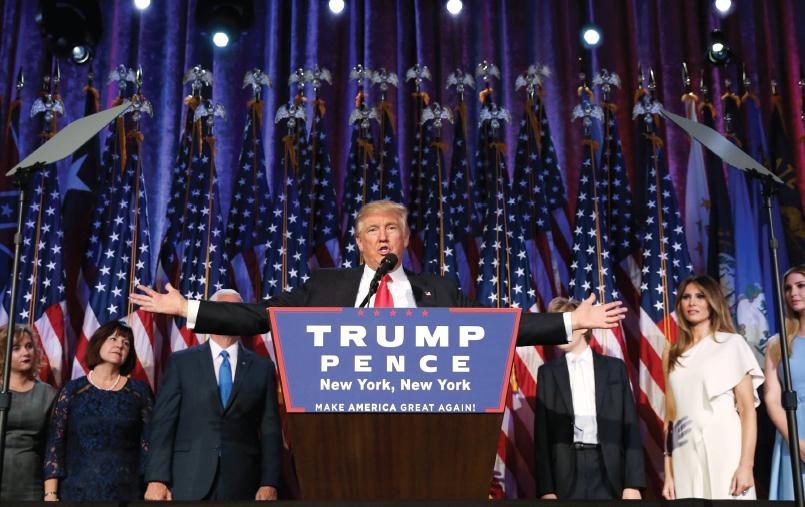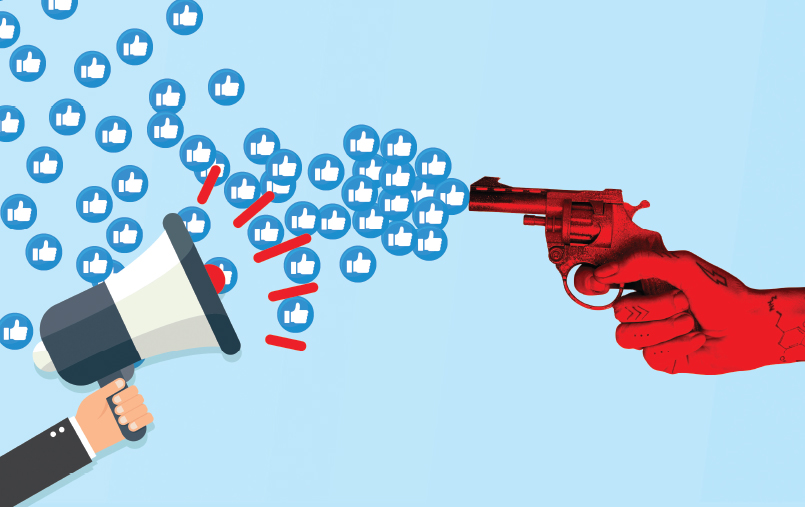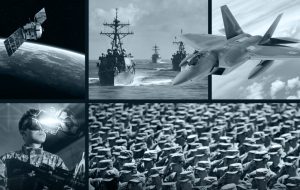The sharp global polarisation and ongoing geopolitical uncertainty have ushered in a new era of conflict, distinct from the great power struggles of the 19th century. This new phase is characterised by the unprecedented utilisation of rapidly advancing digital and information technologies, enabling states to wage wars in innovative ways. Despite significant military advancements derived from these technologies, the most prominent weapon is now the strategic use of information capabilities to serve national interests.
Social media has emerged as a critical and highly effective instrument in this landscape. Its pervasive role in shaping public perceptions has granted states significant influence over how citizens interpret reality, often without traditional constraints. Platforms such as Facebook, Instagram, WhatsApp, Telegram, YouTube, and X (formerly Twitter) allow governments, individuals, and non-state actors to disseminate propaganda, manipulate public opinion, and sway elections at an unprecedented scale and speed.
This environment has led to the concept of “weaponising social media” as a key element in information warfare. Competing actors have adopted advanced strategies to exploit these platforms for their agendas, while some states are investing in countermeasures to curb misuse and ensure responsible social media practices. These dynamics have raised pressing questions about the nature of this phenomenon, its evolution, and its implications for contemporary and future warfare.
Understanding the Concept of Weaponised Social Media
The Gulf War in 1991, often dubbed the “first Internet war,” and the Yugoslav Wars of the late 1990s, referred to as the “first Web wars,” marked the early integration of information technology in conflict. The 2003 Iraq invasion further cemented “information operations” as a core component of combat strategy. However, social media now plays a pivotal role in modern warfare, based on the premise that controlling the digital information battlefield is as critical as securing physical territories.
Weaponising social media involves leveraging these platforms to spread propaganda, disinformation, and fake news while manipulating public opinion and influencing political outcomes. Various tactics are employed to achieve these goals, including:

• Spreading Misinformation and Fake News: This tactic involves propagating conspiracy theories and false narratives about adversaries to undermine their credibility and inflict reputational damage.
• Propaganda Campaigns: Governments and organisations use compelling imagery, videos, and memes to shape public opinion in favour of specific political or ideological agendas. These efforts often include creating fake grassroots movements to amplify certain causes.
• Social Media Bots: Automated accounts are deployed to magnify particular messages or flood platforms with disinformation. These bots create an illusion of widespread support for a cause, skewing public perception.
• Phishing and “Spear Phishing”: Phishing, specifically “spear phishing,” refers to targeting an individual or a group with the goal of luring them into performing certain actions, such as clicking on a malicious link or opening an attachment containing malware. This can lead victims to fake websites that request login credentials or directly install harmful software on their devices. Once compromised, attackers can gain access to broader networks or steal sensitive information, often remaining undetected for extended periods. While phishing was once primarily executed via email, social media has introduced new avenues for these cyberattacks, particularly in politically motivated campaigns. Social media platforms offer highly trusted environments, making them prime targets for spear phishing operations.
• Cyberattacks: Cyberattacks involve a variety of tactics, such as hacking into adversaries’ accounts or targeting critical institutions in rival countries. They may also use malware to disrupt strategic infrastructure or steal sensitive information. These tactics have become increasingly sophisticated, with social media serving as a powerful tool for launching such attacks.
• Artificial Intelligence Techniques: Artificial intelligence (AI) has become a critical enabler in enhancing the capabilities of social media platforms. AI tools create and disseminate highly convincing content, manipulating political discourse and information with unprecedented precision. Detecting this organised disinformation has become increasingly difficult. One such example is “deepfake” technology, where AI-generated videos can make it appear as though political leaders are delivering speeches that never happened, creating confusion and eroding trust. AI also helps actors evade detection, complicating efforts to confront this form of digital manipulation.
• Information Operations (IO): Information operations rely on coordinated disinformation campaigns aimed at disrupting decision-making processes, delegitimising opponents, and undermining social cohesion. These operations involve gathering intelligence on specific targets, crafting provocative narratives, and spreading them systematically across digital platforms to achieve political or ideological objectives.
• Amplifying Digital Hate Speech: Social media is increasingly used to amplify hate speech, particularly in vulnerable contexts, heightening its potential impact. These platforms can be leveraged to incite violence, pushing groups to escalate conflicts and expand their reach. The rapid dissemination of inflammatory rhetoric fuels division and discord, further polarising communities and contributing to instability.
• Extremism and Recruitment: Social media has become a favoured channel for extremist groups to recruit new members. These platforms provide tools for coordination and manipulation, allowing groups such as ISIS to significantly benefit from the reach and anonymity offered by social media.
Recruitment strategies often involve targeted messaging designed to radicalise vulnerable individuals and cultivate a sense of belonging within a larger, ideologically driven movement.
While disinformation campaigns, hate speech, and violent recruitment are not new phenomena, the role of social media has fundamentally altered the dynamics of information warfare. Unlike traditional media, social media platforms increase the speed and reach of weaponised information, enabling it to spread globally to a far larger audience. The ability to personalise content based on user preferences enhances its relevance and impact, making it more likely to influence individuals and groups. Machine learning algorithms, used by these platforms, take personalisation further by offering more targeted content, narrowing the scope of information individuals receive and reinforcing their existing views.
This process of content curation exacerbates the risks of social fragmentation and polarisation, as platforms organise users into groups based on shared interests and demographic characteristics. As a result, rumours can be perceived as facts, and collective anger on social media can escalate into real-world violence.
The Evolution of Adversaries’ Use of Social Media as a Weapon
Many countries and non-state actors have increasingly employed social media to serve their various purposes, especially given the more than 3.2 billion users of these platforms, which has heightened the threats posed by the concept of “weaponising social media.” This is due to the ability to access vast quantities of personal data. Over the past few years, the weaponisation of various social media platforms has developed in different ways, with numerous examples reflecting its use for achieving political or ideological goals. Some of the most notable examples include the following:

The 2016 and 2020 US Presidential Elections
Several US reports accused Russia of heavily using social media during the 2016 and 2020 presidential elections, spreading misleading propaganda and false information across various platforms to sway American voters. This has been seen by some as a turning point in the weaponisation of social media to influence political and electoral processes in different countries. Estimates suggest that a network of bots, including more than 60,000 Russian accounts, targeted social media, particularly Twitter, by manipulating the platform’s algorithms and posting videos and varied content to influence voter attitudes.
A few weeks after the 2016 election, over 10,000 tweets, each containing links to malicious software, were sent to employees of the US Department of Defence on Twitter (now X). These were targeted at employees’ families, which led to the breach of devices containing sensitive government information through shared home internet networks. The attack was considered the most coordinated and organised cyberattack against the United States at the time.
The Brexit Referendum
Numerous reports have indicated that the 2016 Brexit referendum in the UK was also heavily influenced by misinformation and propaganda spread via social media. Specific population groups were targeted with this content and messaging. A report by the US National Public Radio (NPR) found that around one-third of discussions surrounding Brexit on social media were driven by bots that aimed to support a particular viewpoint.
Electoral Processes in Various Countries
In recent years, social media has played an increasing role in influencing electoral processes in several countries. In India, for example, political parties weaponised social media platforms to target specific population groups by tailoring messages aimed at influencing their voting behaviour. Similarly, reports have revealed that social media played a significant role in shaping the direction of electoral processes in Mexico.
The Chinese Social Credit System Model
China has introduced another model, known as the Social Credit System, which relies on monitoring all individuals’ activities on social media. Everything a person searches for or purchases is collected into a score that reflects their social creditworthiness. Based on this score, individuals can receive various rewards or penalties. The system not only evaluates an individual’s own actions but also takes into account the actions of others within the individual’s network, such as family members, creating a new dynamic for influencing individual behaviour via social media.
Social Media Wars
Countries have begun to use social media as a primary tool for escalating tensions against each other. For example, German courts have imposed penalties for liking posts that support Russia. Additionally, the European Commission has increased pressure on social media companies to ban Russian media outlets with millions of followers, even going so far as to ban certain independent journalists and label them as affiliated with Moscow’s media. In response, Russia retaliated by banning Facebook and Instagram, declaring them extremist organisations.
Weaponising Social Media and the Trajectories of Modern Warfare
Social media has long been considered a vital tool for political purposes. It not only influences opinions and audiences but has had profound effects on the course of wars, starting with World War II, when Germany relied on radio as a new, fast communication tool with military strategic and tactical implications to connect tanks and planes to the population on a broad scale. Wireless communication not only helped the Germans coordinate and move more quickly, but it also enabled direct communication with the French population, spreading fear. This strategy was later replicated by the terrorist group ISIS, which also relied on social media, particularly Twitter, to promote itself and weaponise it during its sudden invasion of Iraq. This allowed it to defeat a force many times superior by using its bot networks on Twitter to publicise its attacks, portray its movements, and spread fear, marking an important shift in how social media, a key modern communication tool, is changing the course of contemporary wars. From this perspective, the current era is defined by online information wars as a central aspect of the military doctrine and behaviour of various nations. However, this will likely blur the lines between actual combatants and non-combatants, creating a grey area that is an integral part of modern warfare.
Weaponising Social Media in the Ukraine War
The use of social media as a weapon has increased significantly since the outbreak of the Russia-Ukraine war. While social media weaponisation has been repeatedly used in modern wars, the Centre for Governance Innovation has noted that the Russia-Ukraine war is the first full-scale war fought on social media, marking a turning point in the trajectory of future wars. The Russia-Ukraine war has reshaped the information landscape in modern warfare.
The Russia-Ukraine conflict has evolved into one of the most complex information wars in modern history, which did not begin with the direct outbreak of war in February 2022, but started back in 2014. During that time, social media platforms began being used as a powerful tool to shape global public perception, creating a division between the Western narrative of Ukraine and the Russian narrative, as part of the ongoing information and hybrid war between the two sides.
On one hand, while Russia promoted its own perspective on the historical relations between Russians and Ukrainians, Ukrainian President Volodymyr Zelensky used his personal account on the platform “X” to effectively communicate with the global audience from the outset of the war in Ukraine. Social media also gave rise to what is known as “citizen historians” – individuals who share real-time developments and updates through their social media accounts. These individuals have become one of the key tools reshaping the disinformation landscape in this war. While social media represents a good mechanism for documenting the facts of war, it has also facilitated the spread of disinformation. This was seen in the disinformation strategies employed by Ukraine in the war, with Kyiv spreading many heroic stories that were later exposed as false, in an attempt to garner more international support while simultaneously boosting the morale of its soldiers. Furthermore, many sites that published false narratives and disinformation in favour of both sides of the conflict were uncovered, with each side attempting to promote its own narratives and disinformation strategies in support of its position.
For the first time in modern warfare, a warring state was able to mobilise social media users worldwide through its official state apparatus. Some Western reports revealed that Ukraine’s Ministry of Digital Transformation negotiated secret deals with social media platforms in the United States and successfully recruited thousands of people, both domestically and internationally, to form its digital armed forces used against Russia. The tasks of these digital forces range from information warfare, including targeting Russian media outlets and those sympathetic to Moscow in the West, to attacking both military and civilian infrastructure within Russia.
Implications and Risks
The weaponisation of social media has raised growing concerns among various countries, due to the implications and risks it entails. The most prominent of these risks are outlined as follows:
• Propaganda and Disinformation: Weaponising social media can lead to the spread of false information and misleading propaganda, which may have negative consequences on political decisions, public opinion, and can undermine trust in governmental institutions, political systems, and the media.
• Psychological Warfare and Social Disturbances: Social media is being used to manipulate individuals, creating psychological warfare, such as feelings of isolation and depression, as well as social unrest in some countries.
• Promoting Extremist and Hate Speech: Some parties weaponise social media to promote extremist ideologies and spread hate speech, potentially escalating violence and social unrest by exacerbating societal divisions and polarization.
• Erosion of Privacy: Social media is being used to gather and exploit personal data, significantly undermining the privacy and security of individuals and putting it at risk.
• Influencing Elections and Political Processes: Some countries exploit social media to interfere in elections and political processes in other countries, which could affect the outcome of elections and potentially destabilise political stability in those countries.
• Cyberattacks and Cyberwars: Social media has become a major tool in cyberattacks carried out by states and non-state actors against each other, negatively impacting critical infrastructure in various countries and endangering national security, not to mention the harm to financial systems, such as fraud, intellectual property theft, and financial crises that could harm institutions and even countries.
• Disintegration of the Global Internet Network: The weaponisation of social media could lead to the transformation of neutral internet services into assets for adversaries, a phenomenon now referred to as “geopolitical politicisation.” It could also result in the disintegration of the global internet network, as the weaponisation of internet service providers takes on a geopolitical dimension.
Although social media platforms regularly work to eliminate bots and fake accounts, these bots have the ability to regenerate automatically. Moreover, they can create accounts and keep them dormant, only activating them after months or even years, making it increasingly difficult to detect them.
Another issue concerns the ambiguous legal status of weaponising social media. Legal systems have not yet sufficiently regulated this issue, leading to more challenges, such as freedom of expression, the politicisation of internet service providers, and the fragmentation of the global internet. While international humanitarian law regulates cyber warfare, the weaponisation of social media does not fully align with international humanitarian law standards, especially since the actors in the information war relying on social media are, in reality, not specialised individuals but often civilian internet users.
In conclusion, the weaponisation of social media has become a primary tool in modern warfare, where it can fuel political and social unrest in targeted countries, undermine trust in governmental institutions, and create intense societal divisions. The weaponisation of social media reveals the need for greater digital literacy and further reforms that social media companies must undertake to improve transparency regarding the policies and algorithms that shape global discourse.●
» By: Adnan Moussa
(Assistant Lecturer, Faculty of Economics and Political Science, Cairo University)














